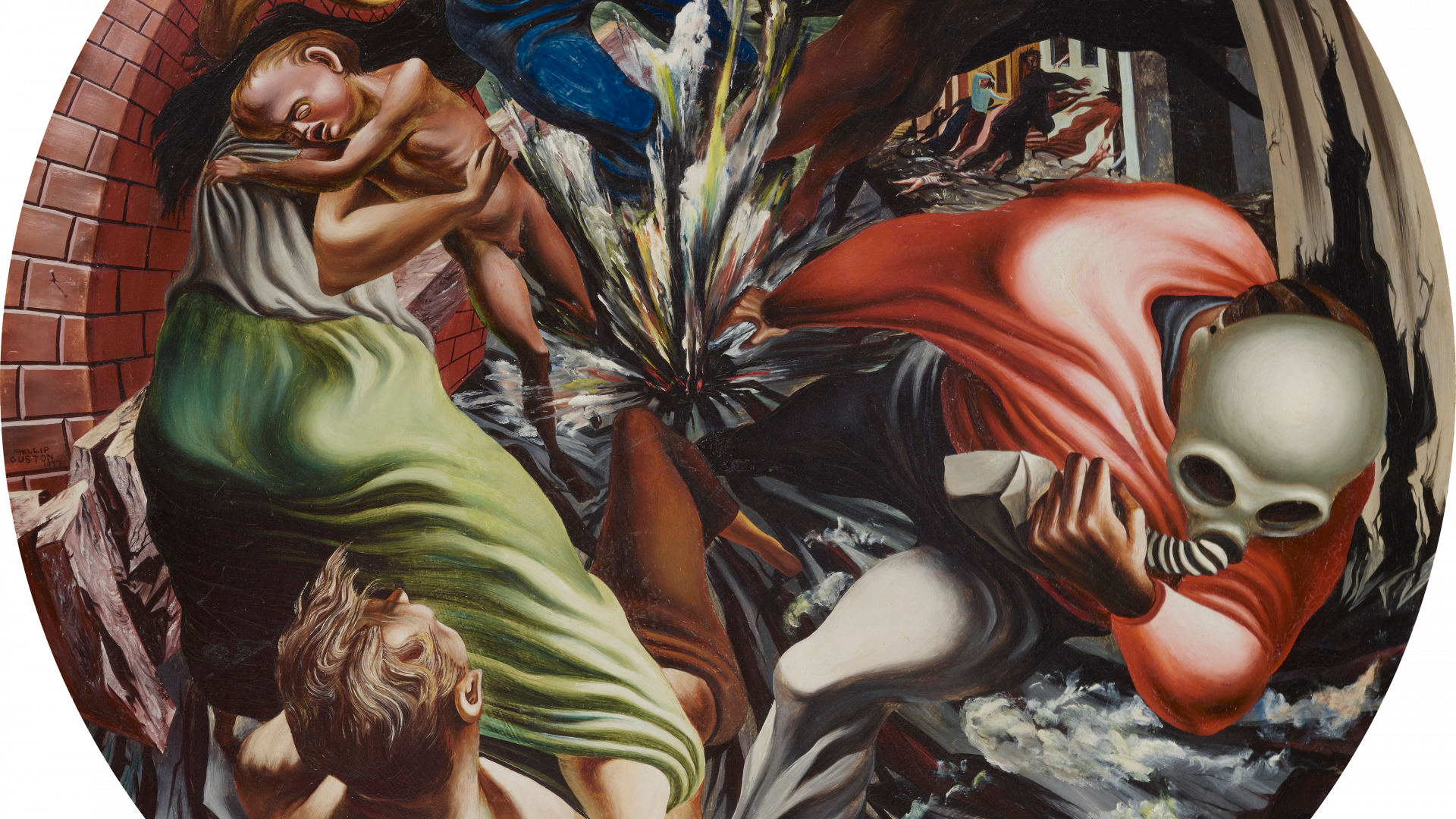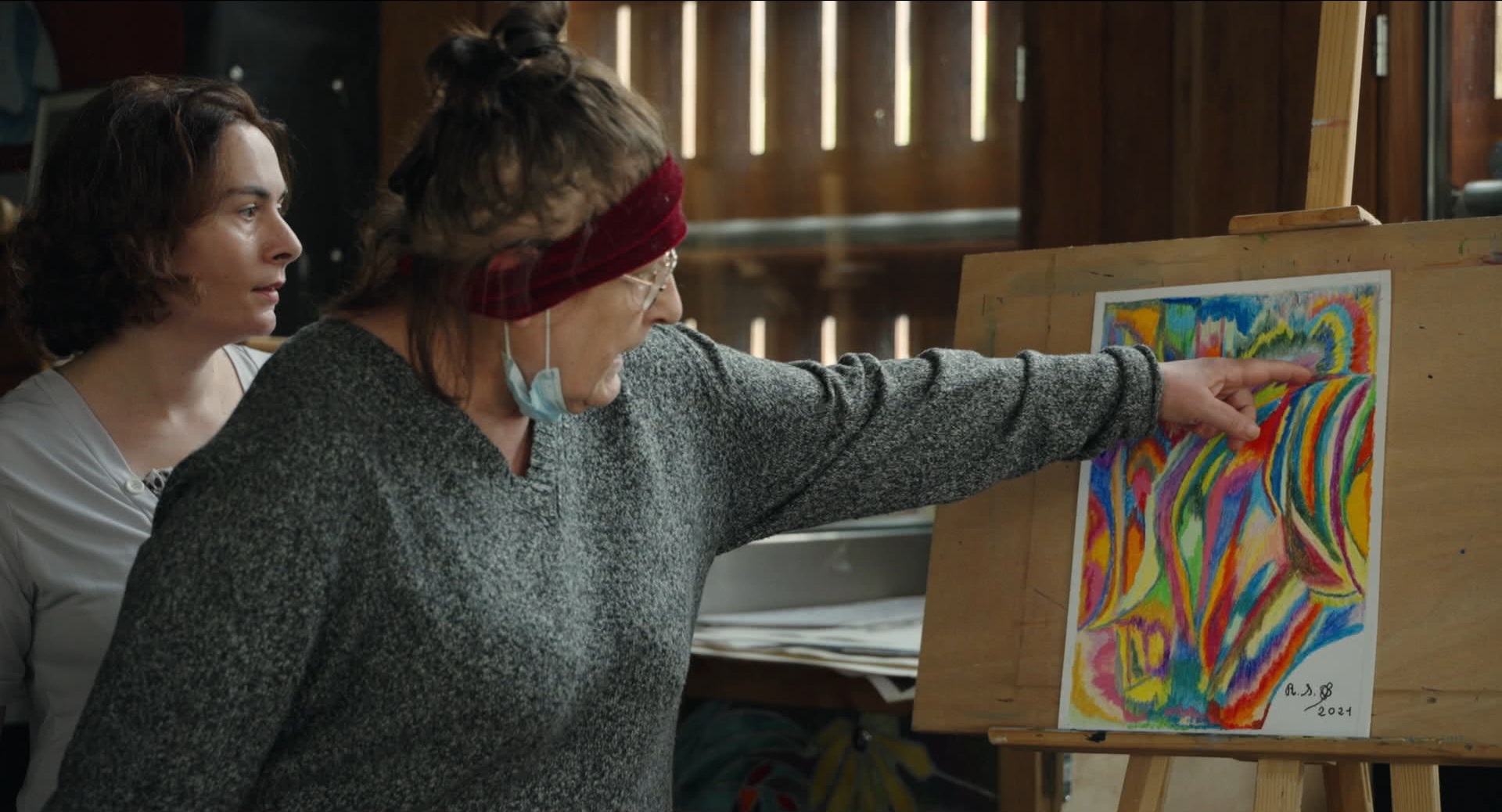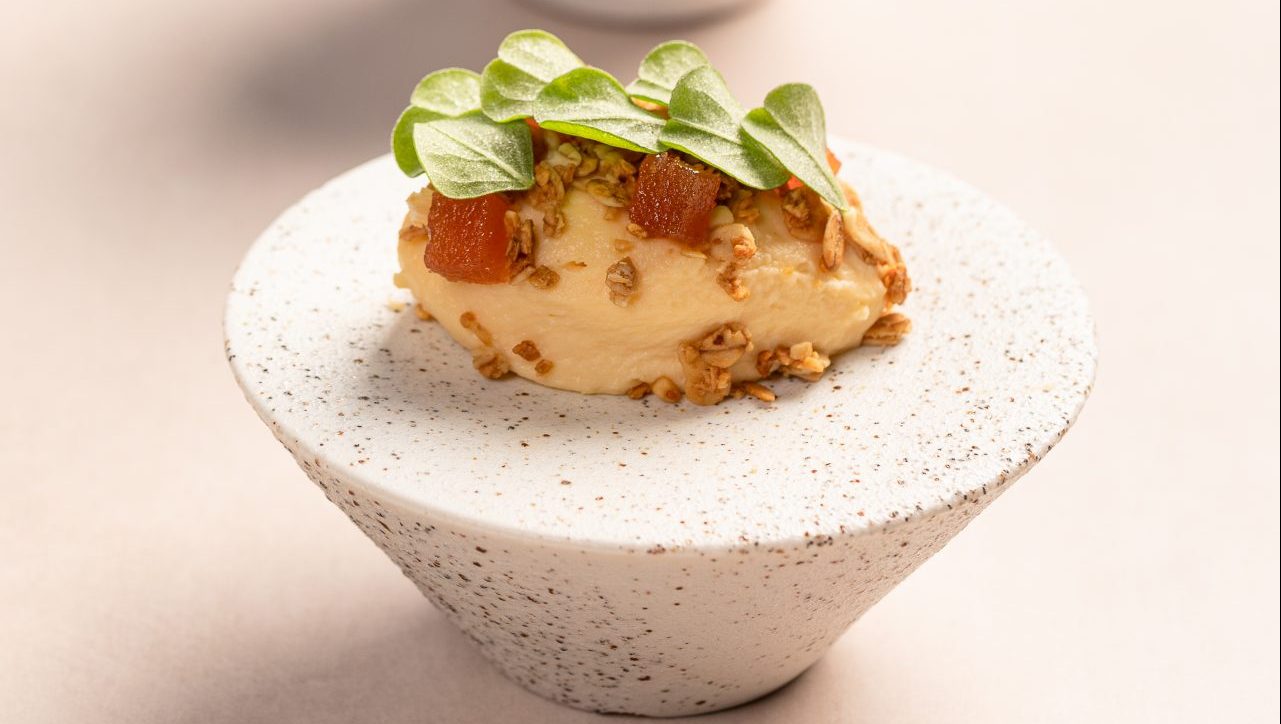In 1948, the American artist Philip Guston made the first of several trips to Italy, as winner of a year-long scholarship. Sailing from New York to Naples, he visited Rome, Florence, Orvieto, Siena and Arezzo, seeking out the art that he had until then seen only in print form, consulting books in the public library.
Perhaps surprisingly, to those who think of Guston primarily as the author of hard-hitting commentaries on the American hard right, he made a particular point of viewing the great cycle of religious frescos by the 15th-century Tuscan artist Piero della Francesca. Guston found Arezzo, home of Piero’s The Legend of the True Cross, shattered by warfare. At first sight he believed the church of San Francesco to have been bomb damaged, before discovering that its west end and interior were never finished. Today the piazza before this much-visited cycle of frescos has attractive bars and antiques shops. Guston would not recognise it. He might not even approve, having warmed to the church’s austerity as a perfect contrast to the dignified sumptuousness of Piero’s chapel behind the high altar.
Lecturing 25 years later to students in New York, he explained his unfailing fascination with Piero’s masterpiece. “What you first see, before you even recognise the subject matter, are these big, soaring verticals and very full circles. And the colour… is the colour of faded things, dull reds, milky blues, liver umber, dirty whites. And all this in a geometry that I never quite saw before.”
His love affair with Italian Renaissance art underpinned his work through its many stages, as represented in a superb and long-awaited exhibition at Tate Modern in London, the first large-scale UK show devoted to Guston for more than 20 years. Delayed firstly by misgivings over the content of pictures that depicted overt racism, then by Covid, in the event the show is timely: the wave of prejudice against black people that inspired one of Guston’s earliest works led to brutality and mob violence that resonate today.
The story of Philip Guston begins long before the famous, startlingly sugary pink depictions of hooded Ku Klux Klan adherents, motoring casually through town, hiding toxic views in plain sight. But the cartoonish outlines hark back to his youth. Born Phillip Goldstein in Montreal in June 1913, he was the son of migrants who had come from Odesa in modern Ukraine – Polish-born Leib Goldstein and his wife, Rachel. (The artist adopted the name Guston from around 1935, concerned that his girlfriend’s parents would not take to a Jew.) His father, unsuccessful in menial work, took his own life when Philip was 10.
According to his own account (although not his mother’s), Philip found the body. Whatever the truth, this childhood trauma clearly runs through unnerving images of single, dangling head-like lightbulbs, which recur throughout his 50-year career.
His early talent prompted his mother to enrol him for lessons in cartoon drawing, a first step towards the art training that would lead to his friendship at Manual Arts High School in Los Angeles with fellow student Jackson Pollock. Guston was briefly expelled and then reinstated for campaigning against excessive emphasis on sport. Taking odd jobs in stores and, with his good looks, as a film extra, despite relatively little formal training he began to exhibit in mixed shows. After working on a mural with others in Mexico City, in 1935 he joined the Federal Art Project. This enlightened scheme under Franklin D Roosevelt’s 1930s New Deal had the double benefit of employing creative artists and beautifying public spaces. The monumentality of Piero, the muscularity of Michelangelo are both visible.
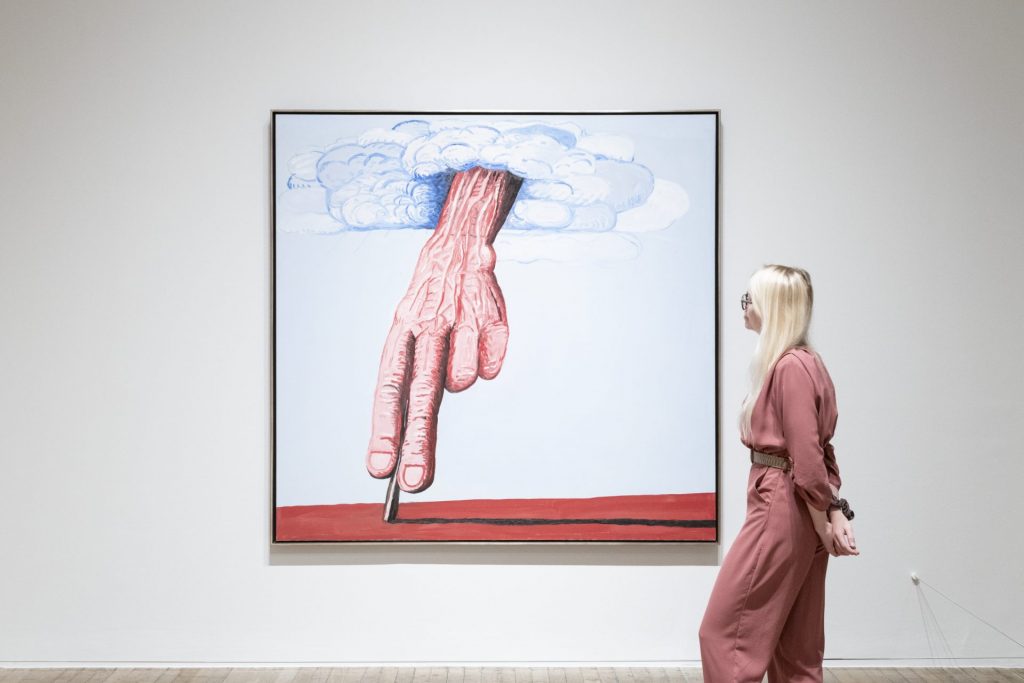
In 1937, the bombing of civilians in a Spanish city fired Picasso’s searing Guernica. But the Spanish artist was not alone in condemning the atrocity in art. Guston also responded with an incendiary painting, Bombardment, adopting the circular tondo form often associated with religious art. But in place of a madonna, infant and saints is a cluster of terrified figures, blasted to the edge by the explosion spinning out of the centre.
It was as if Guston’s painting style was blown apart at the same time, for although he continued to create murals and to train others in this expansive art form, in 1941 a holiday sketch prompted one of many changes of direction. Drawing from a distance, he found a townscape on Ischia emerging in pen and ink as a criss-crossed knot of straight lines. This loose grid with its forceful centre would appear over and over again in a series of attractive abstracts in oil with a predominantly pink and grey palette. These proved commercially successful – to the extent that, when Guston changed direction again the composer Morton Feldman, proud owner of a pink-and-grey grid, was shocked by later work and ended the friendship. (Their association lives on in music: Feldman composed a four-hour chamber work dedicated to Guston, four years after his death in 1980. Extracts are played in the exhibition.)
The pink-and-greys of 1950s paintings such as The Bell, Dial and Summer in turn dissolved into raw and ragged blocks of colour, with wide, agitated brushstrokes. With titles that suggested portraiture or self-portraiture, bright colours give way to a central mess of black in a rough sea of grey. When Guston died he left a wife, Musa McKim, and a daughter, also called Musa. They inherited, according to their daughter, “hundreds of tubes of cadmium red medium, mars black, titanium white”.
The complete breakdown of recognisable imagery resolved in yet another new departure in the late 1960s and early ’70s; this time the drawing of simple household objects. The lightbulb was back. The book became a powerful sole subject, rendered so as to suggest both pages and also tablets of stone, or with lines of print jumping clean off the page. When combined in a larger work, these singular images take on the potency of hieroglyphs or pictograms. The observer feels that a message could be being etched out in code.
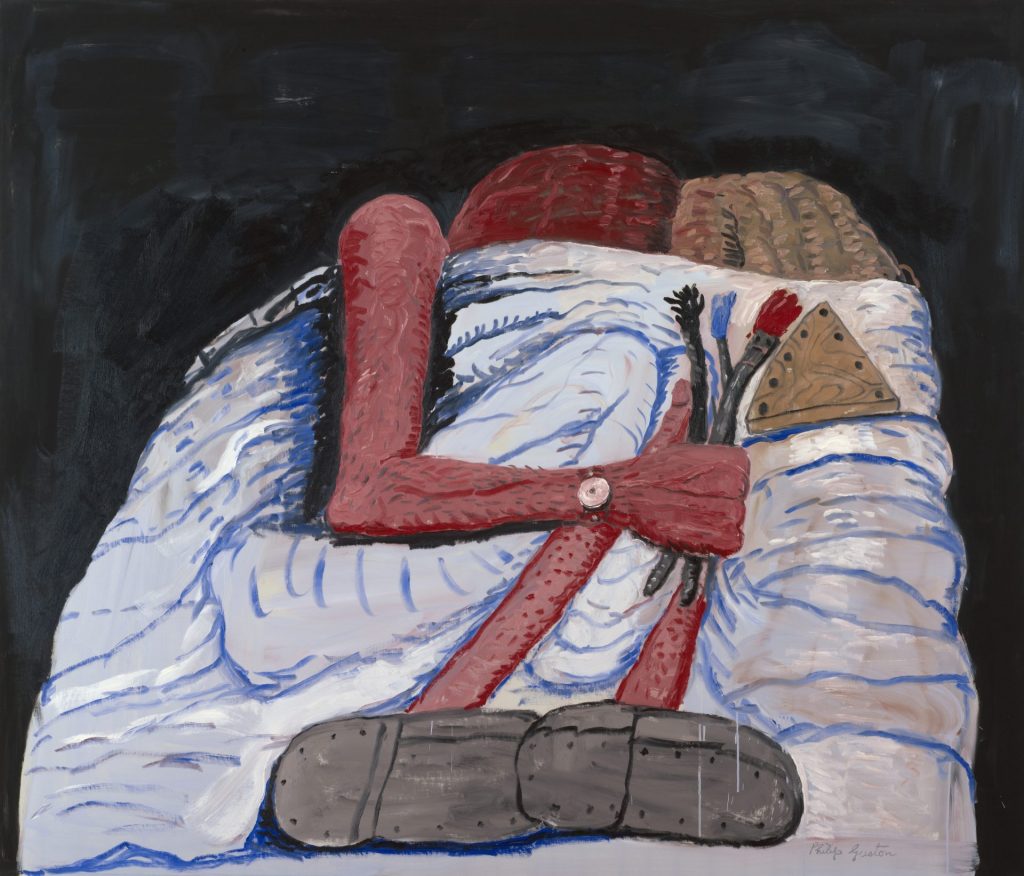
But in the works that followed, the message was loud and clear. The loathing that Guston felt for the Ku Klux Klan resurfaced in his art – and many fans recoiled in horror. What shocked his audience was the childish jauntiness of the hooded men who, in real life, terrorised black townspeople. In his early drawing of the KKK, he had been as explicit in his pictorial account of the lynching of a black man as a Renaissance artist depicting the Crucifixion. But now, his hooded men were disturbingly comical, with big heads and little bodies like cartoon characters, their pudgy fingers packed tight like paws or sausages.
In City Limits, on loan from the Museum of Modern Art in New York, three hooded figures cram into a clown car with steamroller wheels, cruising a bleak urban landscape. For all his success, the artist felt a duty to counter violence with art. “What kind of man am I, going into a frustrated fury about everything,” he would say, “and then going into my studio to adjust a red to a blue?”
The public was astounded. Was Guston suggesting that this villainous secret society was just a bit of fun? Of course not. He was not only ridiculing and belittling the thugs in their preposterous fancy dress, he was shouting a warning, loud and clear – in strident colours and with unambiguous outlines. Conspirators are not slinking unsuspected in the background, he is saying. They are in our midst.
How would Guston have rendered today’s inflammatory rhetoric on both sides of the Atlantic? Pretty much like this, one suspects, with self-regarding rabble-rousers taking centre-stage, livid with venom, shameless in their views. The pictures were condemned by most when they were shown at Marlborough Gallery, New York in the autumn of 1970. Even before the show closed, he and his wife had escaped the furore by sailing to Italy. A job at the American Academy in Rome meant more travel all over the country – more chances to view Renaissance art.
Upon his return to the US, Guston gazed inwards, with a series of self-portraits, his stubbly self pictured with the props of his life – cigarettes, chips… “You’re painting a shoe and it turns into a moon; you start painting the moon and it turns into a piece of bread.” Musa McKim frequently appears, showing just the top of her head, her hair parted down the middle. And there is a new motif: Guston had been only nine years old when his older brother, Nat, lost both his legs. His own car had rolled on to him. Gangrene set in and Nat died. In later paintings, disembodied legs, often whimsically arranged, wind in and out of pipes with horseshoe-like inspection hatches. As with the Ku Klux Klan images, there are disturbing echoes – not only of Nat’s accident, but also of the death camps.
Musa, a poet, had a stroke in 1977, which stopped her writing. Three years later, Guston died of a heart attack, suffered over dinner at the house of his doctor, the father of the chef Ruth Rogers. For all the artist’s capacity to shock, Couple in Bed is an affectionate, self-deprecating double portrait. Two crinkly hair-dos poke out from under the bedclothes. A wristwatch marks passing time; three brushes loaded with black, blue and red are grasped, primed for action; large feet at the end of two skinny, hairy legs are shod, ready to walk to the easel. It feels as though this is the nearest Philip Guston ever got to rest. What he admired in Piero della Francesca was “the pause”. This was his.
Philip Guston is at Tate Modern, London, until February 25, 2024


